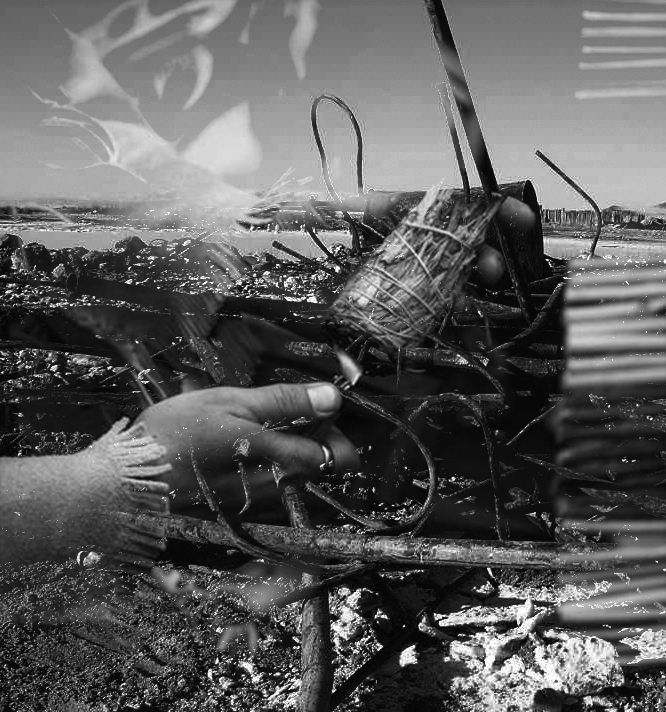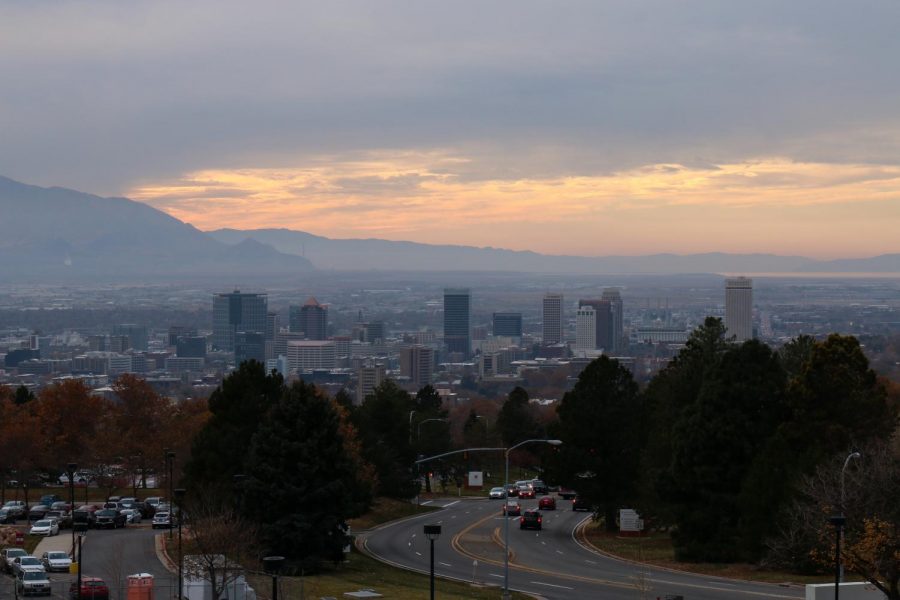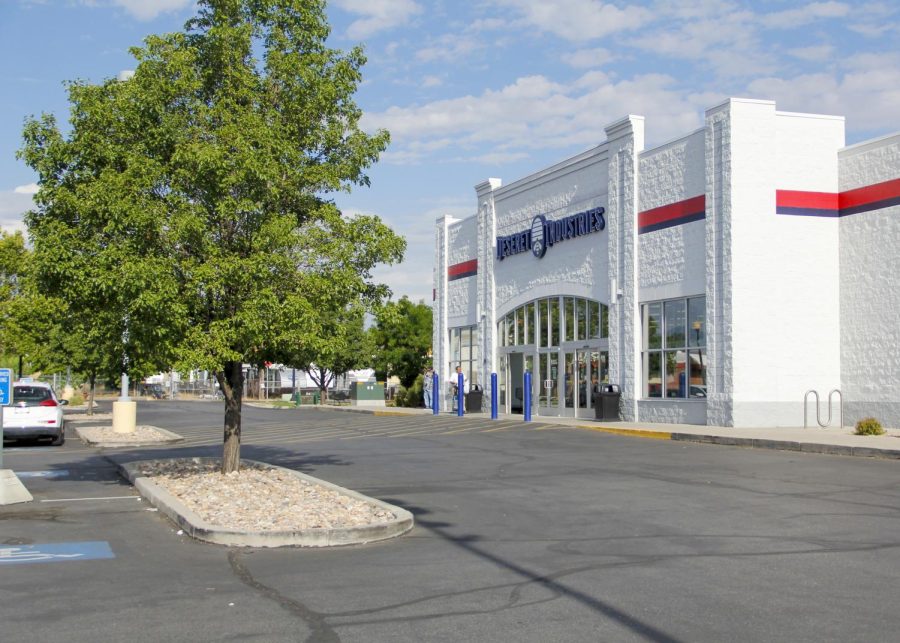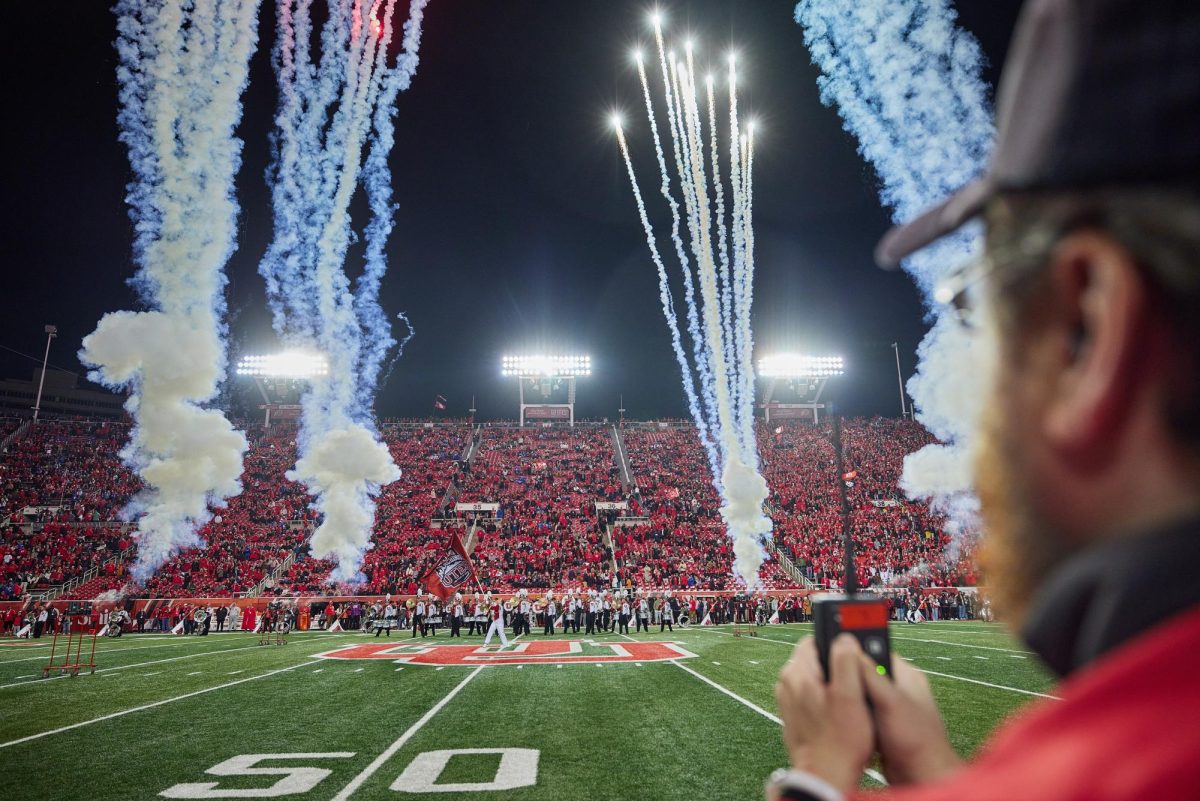Land Art, Vandalism and Utah’s Natural Environment
October 27, 2021
Utah is well known for its beautiful mountain ranges, vibrant red rock and the briny Great Salt Lake, but what about its unnatural landscapes? From steel monoliths to rocky spirals, Utah is home to some of the world’s most renowned pieces of land art.
Just last November, mysterious monoliths appeared across the world, and the ones found nearby in San Juan County, Utah, garnered international attention. The news surrounding installations like these steel monoliths, and their subsequent destruction, raise questions about the land art here in Utah, vandalism and the impact on the surrounding environment.
Native Lands
I would be remiss if I did not begin with acknowledging the fact that these artworks, and the entirety of Utah, sit on stolen Native land. Utah, which derives its name from the Ute Tribe, was the crossroads for many indigenous tribes and is the ancestral homeland of the Shoshone, Paiute, Goshute and Ute Tribes.
It is important to frame these conversations about land art through this lens in order to fully understand the impact of these works, as these land art installations are statements and scars of colonialism on this land.
Scattered across the state are many important spiritual sites that are all too often vandalized and defaced. The pictographs and petroglyphs are some of the oldest examples of Utah’s vandalized land art. In late April 2021, the “Birthing Rock” petroglyph near Moab was defaced by vandals. The over 1,000-year-old artwork had images of “an ejaculating penis” as well as in bold letter “white power… and [other] scribbled sexual vulgarities,” according to Smithsonian Magazine.
This defacing of Native people’s cultural heritage not only underscores Utah’s racist underbelly but also the devaluation of land art and the environment in general. Because of the remoteness and lack of protection, many of these sites have allowed this behavior to go unchecked.
Spiral Jetty
Arguably the most well-known piece of land art in the world, Robert Smithson’s “Spiral Jetty” sits at the heart of many other environmental controversies. Smithson was initially drawn to the site of Rozel Point because of its unique, alien environment. The north arm of the Great Salt Lake turns a bright, vibrant pink during certain times of years. This pink color, along with the networks of cracks and crystalline formations, occurs because of the high saline content of the lake. It has become a core part of this artwork.
From its creation, “Spiral Jetty” greatly impacted its environment. The jetty was actually constructed twice. The one we see today, the second iteration, is much larger than Smithson’s original design, measuring 1,500 feet long and consists of 6,000 tons of basalt rocks, sand and dirt. “Spiral Jetty” was completed in April 1970. Although the construction of the jetty only took about seven days, the heavy machinery used left lasting scars on the environment. You can see an area completely cleared of the native sagebrush right above the parking lot. The impact of the jetty’s construction is still seen in the landscape.
In its 51 years of existence, “Spiral Jetty” has seen its fair share of visitors. But as of late, visitation has dramatically increased. 2020 saw the daily amount of cars driving out to the remote site astronomically jump. One day in March, according to an underground sensor, over 700 cars drove out to the jetty. This increase in visitorship to the installation, unfortunately, brought with it an increase in the environmental degradation of the site.
Visitors and Vandals
In my own journeys out to the jetty over the past few years, I have noticed an increase in camp fires, carved initials in the sand, and other human-caused degradation of the site. The mantra of “leave no trace” does not seem to apply to the jetty.
In my last trip out to the site, I saw multiple camp fires roaring down on the artwork as well as the addition of two new concrete slabs at the center of the jetty. Don’t take just my word for it, though. According to Sean J. Patrick Carney, a writer for Art Forum, a couple recently drove their Jeep Wrangler down onto the jetty for a photo op.
When artists are inspired by and choose to place their work in and around natural landscapes, they must understand how their work is changing it — not just in the moment, but by leaving it in the hands of observers. Whether it’s whatever outside materials are brought in for creation, or whatever visitors bring with them that they don’t take back out, we lack a collective awareness of how to respect and preserve sites like these.












